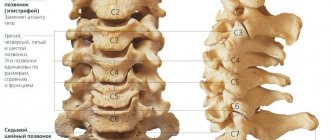Why does a person faint and what is this condition? The brain cannot function normally without a constant flow of blood and nutrients. A sudden disruption of this process causes severe oxygen starvation of brain tissue. The result is a short-term loss of consciousness - usually it lasts a few seconds. The repetition of these cases indicates cardiac and neurological problems in the body, and the causes of fainting are varied. There is no need to delay their diagnosis. Not only fainting, but also pre-fainting conditions should alert you and lead you to a qualified specialist. Now you can undergo a consultation and a set of preparatory examinations when registering for a course of enhanced external counterpulsation or shock wave therapy of the heart absolutely free of charge!
Promotion
Just until the end of autumn, undergo a free consultation and a set of preparatory examinations* when registering for a course of enhanced external counterpulsation or shock wave therapy of the heart.**
Send a request
* Check the details of the Promotion by phone. **Has contraindications; consultation with a doctor is required.
Enhanced external counterpulsation (EECP) Cardiac shock wave therapy (SWTS)
Hurry up to apply, the promotion period is limited.
Symptoms of loss of consciousness
Fainting and loss of consciousness - what's the difference? There is no difference, since fainting is a loss of consciousness for a short time (usually up to 1 minute). The main precursor can be called a pre-fainting state. And speaking about the symptoms of loss of consciousness, most often they mean the symptoms of a pre-fainting state:
- a feeling of lightheadedness and nausea sets in;
- the heart begins to beat quickly;
- circles and “spots” appear before the eyes;
- vision loses clarity;
- a strong pounding appears in the temples;
- cold sweat is produced profusely;
- there is a feeling of imminent fall.
It is at this moment that emergency measures must be taken to prevent loss of consciousness. Timely provision of first aid is also extremely important.
However, fainting can occur quite suddenly, without this “warning”. Its symptoms cannot go unnoticed by others:
- a person suddenly loses his balance and falls in a “sheaf”;
- loss of consciousness occurs;
- the skin becomes pale;
- Limbs may twitch and urine may leak involuntarily.
Having regained consciousness, the person feels overwhelmed and experiences severe drowsiness.
Types of fainting conditions
Depending on the reason that provoked them, there is a classification by type:
- Vasodepressor - occur under the influence of emotional factors and stressful situations.
- Orthostatic – typical when taking certain medications or a sudden change in body position.
- Maladaptive - as a result of severe adaptation to environmental conditions.
- Hyperventilation – occurs as a result of increased breathing.
- Somatic - occur due to dysfunction of internal organs. They are divided into subtypes: cardiogenic, anemic, hypoglycemic, etc.
- Hypovolemic - against the background of dehydration, severe blood loss, for example, during menstruation.
Fainting is almost always preceded by severe weakness, tinnitus, a feeling of heaviness in the back of the head, and nausea. The face becomes pale, gray or yellow. Floaters may appear before the eyes. If it is associated with your period, it may be accompanied by severe abdominal cramps. After consciousness returns, dizziness and general weakness may remain.
In case of loss of consciousness associated with menstruation, the patient, in addition to the gynecologist, is examined by a neurologist.
During pregnancy
Fainting in pregnant women is not normal. Its cause is stagnation of venous blood as a result of increased pressure on internal organs. To prevent a deterioration in your health, you need to follow some recommendations: do not make sudden movements or turns, do not put pressure on the abdominal area, sleep on your back.
A drop in hemoglobin levels also leads to a decrease in oxygen supply to the brain. This causes dizziness and weakness. Correction of the amount of iron is carried out by introducing foods containing iron into the expectant mother’s diet, as well as taking vitamins.
For diseases of the reproductive system
This is fainting, often associated with uterine (with fibroids) or other types of bleeding. Chronic gynecological diseases lead to disruption of the hormonal system and disruption of uterine contractions. Pain and heavy blood loss require medical intervention due to the possible development of complications that pose a threat to health.
The risk of gynecological pathology increases after 30 years. With ovarian apoplexy, its rupture is accompanied by bleeding with severe pain. A serious condition can result in loss of senses.
During menstruation
Unconsciousness during menstruation in young girls is a common occurrence. If your health worsens these days, it is necessary to limit emotional and physical stress. Do not apply heat to your abdomen in an attempt to relieve cramping, as this may worsen symptoms.
The pathological condition develops especially often during the first menstruation in adolescents. The causes of fainting in girls during bleeding are associated with a low volume of biological fluid, in women - with a concomitant infectious disease. As a consequence of this, a drop in blood pressure may occur. Indicators from 100/60 mm Hg are considered low. Art. If you do not take immediate measures to stabilize it, you may lose consciousness.
Exercising leads to increased tone of the uterus and increased blood volume.
Causes of fainting
There are many reasons why people faint, and almost all of them are associated with a sharp decrease in the intensity of blood flow in the brain. Among the most common causes of loss of consciousness are disorders of the nervous system (50% of all cases) and heart pathologies (25%). Also, immediately before unconsciousness may:
- vascular function is impaired due to a pre-stroke condition, atherosclerosis;
- increased pressure in the vessels of the skull due to hydrocephalus, tumor, hemorrhage;
- the amount of sugar and oxygen in the body decreases, which occurs with kidney pathologies, hypoglycemia, anemia;
- decreased circulating blood volume due to bleeding.
How likely is it to faint during orgasm?
Loss of consciousness is also called fainting (or syncope). In this condition, cerebral circulation is disrupted for a short time. The person completely switches off and does not respond to external stimuli. This is somewhat reminiscent of an ordinary dream.
Losing consciousness during orgasm does happen. Moreover, this phenomenon cannot be called rare. The French, for example, even have an expression - “little death”. This is the name for the short-term fainting into which a girl falls after a powerful sexual release.
Moreover, sex sometimes leads not only to loss of consciousness, but also to death. Scientists have found that more than 55,000 people die from orgasm every year around the world.
You may be interested in: “What every girl should try in sex”
The duration of female and male peak pleasure is, on average, the same. This is approximately 10-15 seconds, for some it is longer, for others it is shorter. But among women, longer orgasms are more common, lasting 30 seconds or more. And only the female body, with sufficient arousal, is capable of producing several “outbursts” in a row. This is called "multi-orgasm."
Doctors compare orgasm in its effect on the body with severe stress. The nervous system experiences serious overload, which affects the functioning of all organs. Therefore, loss of consciousness with a strong intensity of orgasmic sensation is not uncommon.
Even the Soviet scientist G.S. Vasilchenko compared the peak of sexual pleasure with an epileptic seizure. The same powerful shock to all nervous subsystems, combined with significant energy expenditure. The same thing happens with epilepsy, when the brain is blocked by a sharp and very powerful nerve impulse.
A superficial study of forums on this topic confirms that loss of consciousness during orgasm is very common. Many ordinary people give a very simple explanation for this - blood flows from the brain to the corresponding organs. And if the heart is not in order and the blood vessels are weak, a short-term “blackout” is very likely.
Causes of frequent fainting
The causes of frequent fainting are classified into a separate group. They are usually associated with various mental disorders that manifest themselves periodically, for example, hysterical neurosis. A sudden disruption in blood flow can occur with epilepsy. Often first aid for fainting is necessary for people with low blood pressure and diabetes. A drop in vascular tone can cause fatigue, neurosis, and even a simple transition from a sitting state to a standing state and vice versa.
There are also specific causes in women and men that lead to short-term loss of consciousness.
First aid for fainting:
- position the patient in such a way as to improve blood supply to the head - raise your legs and try to lower your head a little lower than your body;
- loosen the patient's collar, open the window in the room for air access;
- Sprinkle water on your face, apply ammonia to your nostrils;
- the patient has come to his senses - offer him something sweet;
- If possible, give an intravenous injection of glucose - this will improve blood circulation.
If help for loss of consciousness is provided in a timely manner, the person will feel better within a few minutes.
Treatment
Before the ambulance arrives, you need to take some simple steps. First aid for loss of consciousness:
- Provide access to fresh air.
- To improve blood circulation, place the person so that the legs are higher than the level of the heart.
- Spray your face with water or let him smell cotton wool soaked in ammonia.
Please note that it may be necessary to move the injured person to their side to prevent them from choking on vomit or tongue retraction. If the loss of consciousness is profound, more than 7 minutes, and the skin acquires a blue tint, you must urgently call an ambulance. After regaining consciousness, the doctor will recommend an examination and, if necessary, prescribe medications for the patient to nourish the brain, improve the tone of the veins, and B vitamins.
Therapy should be aimed at the immediate cause of loss of consciousness. After diagnosis of the psychosomatic nature of fainting, a woman may be prescribed a course of minerals and multivitamins, means to strengthen blood vessels, and drugs that improve brain activity. If the cause is stress, it is mandatory to take a sedative group of medications.
In case of organic pathology, treatment will be aimed at eliminating it; symptomatic therapy will not only not get rid of the problem, but will also aggravate the course of the disease. If fainting is associated with hormonal changes, medications are selected depending on the woman’s age. The purpose of their purpose is to adapt the body to changed conditions.
In medical practice, for emergency treatment of syncope, cordiamine, caffeine benzoate, is used in injections. If it is necessary to quickly increase the blood pressure level, an ephedrine solution is administered. In severe cases, indirect cardiac massage and artificial respiration are performed.
Folk recipes
Alternative medicine has its own methods of treating fainting. Tea based on medicinal herbs is an effective and safe medicine. To brew it, use chamomile, lemon balm, mint, linden and St. John's wort. To bring a person to his senses, rosemary and camphor oil are used. Having knowledge of the location of reflex points on the body can also help the patient. An infusion of wormwood seeds and a decoction of gentian are taken internally for preventive purposes.
You can faint for both physiological reasons and those associated with impaired functioning of internal organs and systems. If the phenomenon occurs frequently and is accompanied by other symptoms that are not typical for normal syncope, you should seek medical help. Prevention of such a violation is maintaining a healthy lifestyle, timely medical examination, and treatment of chronic infections. Proper nutrition, exercise, tasty and healthy food are the key to health.
Types of fainting
In medicine, there are three main types of fainting.
With neurogenic, there is a temporary disorder of cardiovascular reflexes that control the dynamics of blood in the body. This type is varied:
- vasodepressor – consequences of excessively strong emotions, stress, fear, they occur most often;
- orthostatic are caused by a sharp transfer of the body from a lying position to an upright one;
- fainting due to tight collars is explained by too high sensitivity of the carotid sinus;
- loss of consciousness in older men when urinating at night, coughing, defecating - a consequence of a sharp increase in intrathoracic pressure.
If a patient has disturbances in heart rhythm, problems with the conduction of cardiac tissue are observed, and myocardial infarction is diagnosed, then they speak of cardiogenic loss of consciousness.
If, due to sudden fear, panic, or anxiety, a person’s breathing unconsciously quickens and deepens, causing loss of consciousness, such fainting is classified as hyperventilation .
In addition, there are classifications that distinguish:
- maladaptive form - when fainting is caused by adaptation to external conditions (a person overheats, etc.);
- anemic – when the volume of hemoglobin and red blood cells drops sharply, and what remains is not enough to fully supply the brain with oxygen;
- hypoglycemic – when glucose levels in the body drop;
- extreme forms – when the body is exposed to extreme conditions: high mountain air, burns, intoxication with harmful substances, medications.
Complications
If you hit your head during a fall, you need to visit a traumatologist to make sure there is no traumatic brain injury. Fainting can be dangerous:
- cardiogenic due to the risk of arrhythmia, heart attack;
- received while playing sports;
- while driving a car;
- for injuries caused by a fall;
- in old age, any case requires diagnosis;
- deep fainting can lead to respiratory arrest and suffocation due to tongue retraction.
When diagnosing a condition, a medical specialist pays attention to the events that preceded it (medication overdose, stress, trauma). Next, the heart rate is assessed and blood pressure is measured. In this way, you can verify the absence of cardiac pathology or assume the presence of vegetative-vascular dystonia. A complete blood test provides information about the level of hemoglobin and the number of red blood cells. It is also necessary to donate blood for sugar.
Instrumental studies are prescribed if it is necessary to exclude diseases of the internal organs. These include radiography, ultrasound, electrocardiogram, MRI. Based on their results, consultation with specialized specialists may be necessary.
Diseases that cause fainting
Patients with arrhythmia may experience fainting because the blood supply to the brain is sharply reduced. With bradycardia, symptoms of loss of consciousness are also observed. The reasons are a sharp, almost instantaneous drop in heart rate to 30 or even 20 beats per second when the norm is 65-72.
- In addition, patients may need help with fainting:
- pulmonary hypertension;
- dehydration;
- Parkinson's disease;
- with aortic stenosis;
- diabetes mellitus
Diagnostics
The initial examination consists of listening to the patient’s complaints about the frequency and duration of fainting states, and determining the conditions under which loss of consciousness occurs. A neurological examination is performed.
The patient must be sent for laboratory blood tests.
Among instrumental studies, the most effective are:
- various types of ECG;
- echocardiography;
- computer sphygmomanometry;
- cardiac rhythmography;
- 24-hour blood pressure monitoring;
- duplex scanning of blood vessels.
These are the most modern diagnostic methods that identify the objective cause of fainting and allow you to prescribe optimal treatment.
How does an orgasm occur?
Let's start with the most important thing. Orgasm. What it is? What biological mechanisms allow us to experience unearthly bliss?
- The beginning of climbing a high mountain, the peak of which will be orgasm, is strong mental and physical arousal. If everything goes well, then the erotic “fever” smoothly (or very quickly) turns into active stimulation of erogenous zones. Then the partners proceed to the most important thing - sex.
- Orgasm, oddly enough, happens in the head. The genitals play a secondary role here. They, together with the erogenous zones, send multiple signals to the higher parts of the brain. The latter, having absorbed the energy of millions of small pleasures, covers the entire body with a powerful flash of the “big bang” of our inner universe.
- At the same time, the food center of the brain is also involved in orgasm. Therefore, the feelings of satisfaction and joy after sex are very similar to the pleasant sensations after a hearty and tasty dinner.
- The hypothalamus, the king of hormones, floods the blood with a hormonal “bouquet”. The main role is given to oxytocin. It creates a feeling of satisfaction and calmness next to your loved one. Dulls anxiety and fear. The quality and “power” of orgasm depends on the amount of oxytocin. The same hormone controls the involuntary contraction of the uterine muscles, which occurs at the peak of pleasure.
- The blood is filled with other hormones, rushing to all corners of the body, each to its own receptor. Such a hormonal storm usually gives pleasant sensations: joy, calm, bliss and satisfaction.
- But sometimes things go wrong. The body cannot withstand the overload and the person produces unusual reactions. For example, hysterics, laughter, uncontrollable tears, or the desire to scratch and bite a partner.
The fact is that a powerful nerve impulse of excitation also covers the peripheral parts of the nervous system. And here breathing, cardiac activity, muscle contraction, lung function and other functions are automatically controlled. In this case, failures are likely, which may well cause fainting.
Prevention
Knowing what to do if you faint, you also need to take preventive measures:
- eat rationally (it is better to consult your doctor about your individual diet);
- Moderate physical activity must be present;
- walk at least 2 hours a day;
- Women during pregnancy should regularly visit a gynecologist;
- eliminate extreme loads and overheating;
- Among medications, the doctor may prescribe nootropics, venotonics, adaptogens, and vitamins.
Diagnostics and treatment at the Center for Pathology of the Circulatory Organs
At the CBCP clinic you have modern European diagnostic equipment, advanced research methods and highly qualified doctors at your service.
Even if you have experienced a fainting state once, this is already a reason to see a doctor. And repeated fainting is a mandatory reason to visit a cardiologist and conduct professional diagnostics. Timely detection of cardiac pathology is far from a death sentence. The CBCP cardiology clinic will select an individual treatment program, and your body will return to tone.










